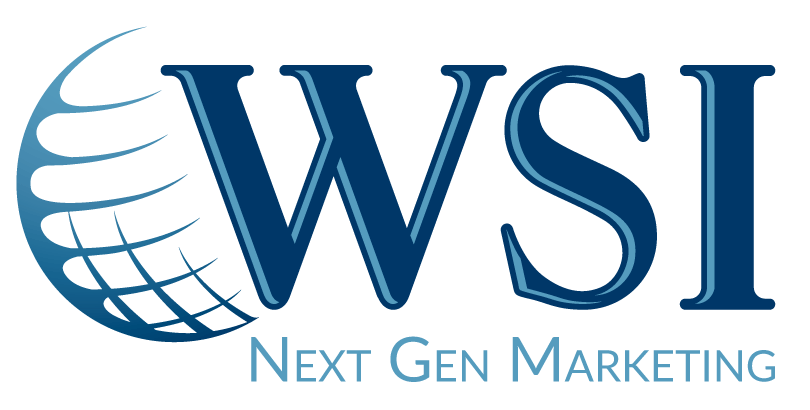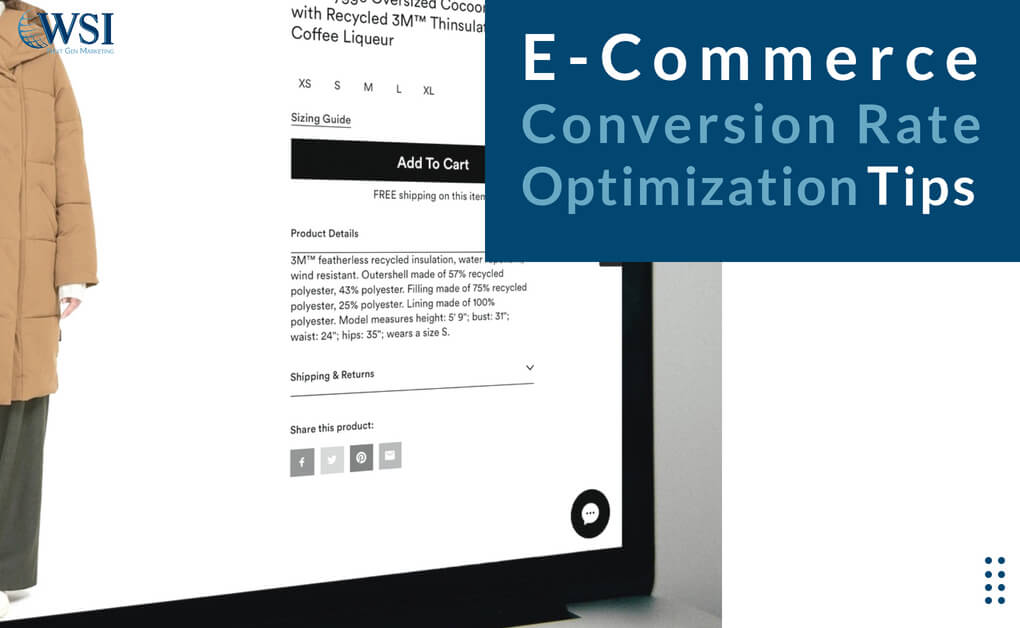E-Commerce Conversion Rate Optimization Tips
Towards the end of 2019 and into the beginning of 2020, e-commerce experienced 10 years’ growth in 3 months (McKinsey). Enter COVID-19 and the result was 150 million new online shoppers (eMarketer). This makes the digital landscape more competitive than ever as new online stores pop up each day. Delighting your customer online is a priority to ensure they convert, and they keep coming back.
Check out these E-Commerce Website Conversion Rate Optimization Tips so you can stay ahead of the competition.
1. Build Trust to Retain Visitors
It’s only natural – if people don’t trust website, why would they put in their credit card info? If you want users to convert or simply stay on your site a bit longer, build trust and credibility.
What to do:
- Check that your website is modern and looks up-to-date. Visitors rely on gut-feeling to decide if they trust the website. This is influenced by the website design – page layout, clear images, large text, etc.
- Feature logos from well-known customers, partners who work with you, or media companies that mention you. You can “borrow” credibility by subtly displaying their logos.
- Display your phone number on the website – ideally, on the top right corner of the website to make it clear that customers can actually talk to someone at your business.
- Show a security seal in places where people need to enter private info. VeriSign, Norton, McAfee all build trust.
Psss… Trust means visitors spend more time on your website, which leads to better search engine result rankings.
2. Improve Website Speed
Another thing that search engines love, but also, people love. An e-commerce website that loads fast has a low bounce rate and high user engagement leading to higher search engine rankings. However, it can be difficult to achieve.
What to do:
- Use Google PageSpeed Insights and GTMetrix to check for issues and possible improvements. Use Google Analytics to analyze which pages are performing poorly.
- Compress and resize image content to be well below 1mb and use a CDN (content delivery network).
- Minimize plugins and external codes that take time to load.
- Use a reliable hosting company that is modern and fast, like WPEngine.
3. Create Easy Navigation
Harder than it sounds, making your website design layout and navigation simple ensures shoppers convert and come back. The goal is efficiency and ease for the everyday user.
What to do:
- Don’t use a hamburger menu on large screens like laptops and desktops. Reserve only for small devices (phones and tablets). Use clear navigation labels so that those who don’t know what you’re selling can get the gist.
- Interactive elements should look interactive. Buttons should look clickable with action-oriented colors. Arrows or “next” links should be visible and clear.
- Avoid false bottoms – when it doesn’t look like users can scroll, but there’s actually content below the fold. False bottoms often occur when a webpage has a full screen header and no indication that there’s more content below. Try making the header smaller or adding an arrow on it to indicate more content.
In general, follow web conventions. See what everyone else is doing. With web design, people want to see the unexpected, but when it comes to navigation and functionality, they want the expected.
4. Express Your USP – Unique Selling Proposition
What makes you unique? Got it? Now look at your website. Is it that message immediately clear? Users want to know in the first few seconds of visiting a site why they stay. Give them a reason right away.
What to do:
- Make your logo functional – add a tagline below it that immediately tells users what makes you different. (i.e.: Lane Bryant has “Fashion Sizes 12-28” right under their main menu logo so it’s clear to users what the website offers).
- If you have certification logos that support your USP, put them above-the-fold.
5. Limit Choices to Promote Decision-Making
A common predicament: not being able to decide what to watch because there’s just too many streaming services and TV shows. Decision paralysis occurs when there’s too many choices. And this is very true in e-commerce. Help shoppers decide and limit their options.
What to do:
- Display a few top-level categories. While we encourage minimizing clicks, this method presents the user with a few top-level categories that are easy to click through. The user then narrows down their decision and lands on their choice with ease. This is better than presenting one or two massive categories that require the user sift through too many products to get to their final choice.
- Make product distinctions very clear so users can easily compare.
Be deliberate and intentional with your store. Great web design uses data and analytics to create optimal website experience.
6. Use Scarcity Principle to Drive Sales
Fear of loss is powerful and when your website makes it clear that “time’s running out,” shoppers are more likely to buy. Potential loss is a great motivator and if a user is interested in a product, it creates urgency.
What to do:
- Show stock items left in products to motivate users. You can also use verbiage like “only 5 items left.”
- Show end dates to promo codes and even include a counter. This helps procrastinators make decisions faster.
7. Display Customer Reviews & Social Proof
If a buyer is unsure about a purchase, they’ll refer to what other have done. They’ll look at reviews and customer photos or social posts about the product.
What to do:
- Show reviews on products and enable photo submissions.
- Show social media posts that feature the product.
- Enable feedback for reviews.
- Use “be the first to review” rather than showing no reviews.
- Collect reviews via post-purchase emails and texts.
8. Upsell like H***
You want to optimize order value per customer. Employ a few strategies to maximize sales and upsell.
What to do:
Bundle. Depending on what you’re selling, bundling can be a great way to encourage multiple product purchases with a small discount.
- Show related products to encourage more shopping
- Try a discount on specific total.
- Offer free shipping after a specific total.
- Offer installment payments – this is a big one!
This is only the beginning…
We have about 19,790,785 more e-commerce website conversion tips but this will have to do for now. Effective e-commerce optimization can make a big difference for your business. If you’re unsure where to start, contact us today!
Get In Touch
Please select a valid form

